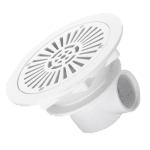Backyard swimming pool designs
Designing a backyard swimming pool involves careful consideration of space, functionality, aesthetics, and integration with the overall outdoor environment. A well-designed backyard pool can serve as a focal point for family gatherings, relaxation, exercise, and entertaining. Here’s a comprehensive guide to backyard swimming pool designs:
Planning and Layout
Assessing Space and Usage (Backyard swimming pool designs)
The first step in designing a backyard swimming pool is to assess the available space and determine how the pool will be used:
- Size: Consider the dimensions of the backyard and how much space can be allocated for the pool without overwhelming the rest of the outdoor area.
- Functionality: Determine the primary use of the pool—whether it will be for swimming laps, relaxation, entertaining guests, or a combination of purposes.
Layout and Integration (Backyard swimming pool designs)
- Location: Choose a location that maximizes sunlight, minimizes shade from trees or structures, and provides easy access from the house and other outdoor living areas.
- Integration: Plan how the pool will integrate with existing landscaping, patio areas, and other outdoor features to create a cohesive and inviting backyard oasis.
Pool Shape and Design
Geometric vs. Free-Form (Backyard swimming pool designs)
- Geometric Shapes: Rectangular or square pools offer a classic and formal appearance, ideal for modern or traditional homes. They maximize swimming space and are easier to integrate with geometric landscaping and architecture.
- Free-Form Shapes: Organic shapes like kidney or amoeba-shaped pools create a naturalistic look that blends well with garden landscapes and irregularly shaped yards.
Depth and Features (Backyard swimming pool designs)
- Depth: Consider varying depths to accommodate different activities, such as shallow areas for lounging or children and deeper areas for swimming and diving.
- Features: Incorporate water features like waterfalls, fountains, or jets to add visual interest, soothing sounds, and a sense of luxury to the pool environment.
Materials and Finishes
Pool Construction (Backyard swimming pool designs)
- Materials: Options include fiberglass, vinyl, or concrete, each with its own advantages in terms of durability, customization, and maintenance requirements.
- Finishes: Choose pool finishes such as tiles, pebble, or plaster that complement the overall aesthetic of the backyard and provide a comfortable surface for swimmers.
Surrounding Decking and Landscaping (Backyard swimming pool designs)
- Decking: Select materials for the pool deck that are slip-resistant, durable, and complement the pool’s design, such as concrete, pavers, natural stone, or wood decking.
- Landscaping: Integrate plants, trees, and shrubs around the pool to soften the hardscape, provide shade, privacy, and enhance the overall ambiance of the backyard.
Functional Considerations (Backyard swimming pool designs)
Heating and Circulation
- Heating: Install a heating system such as a heat pump, solar heater, or gas heater to extend the swimming season and maintain comfortable water temperatures.
- Circulation: A reliable circulation system with pumps and filters ensures proper water circulation, filtration, and chemical distribution for clean and clear water.
Safety Measures
- Fencing: Comply with local regulations by installing a fence around the pool area with a self-closing, self-latching gate to prevent unauthorized access.
- Pool Covers: Use a sturdy pool cover when the pool is not in use to enhance safety, conserve heat, and reduce maintenance.
Lighting and Entertainment (Backyard swimming pool designs)
Lighting
- Underwater Lighting: LED lights installed in the pool can create a dramatic effect, enhance visibility for night swimming, and highlight water features.
- Ambient Lighting: Illuminate pathways, seating areas, and landscaping around the pool to create a welcoming atmosphere and extend outdoor enjoyment into the evening.
Entertainment Features
- Outdoor Kitchen: Consider integrating an outdoor kitchen or barbecue area near the pool for convenient dining and entertaining.
- Fire Features: Add ambiance and warmth with fire pits, fireplaces, or torches around the pool area for evening gatherings.
Maintenance and Care (Backyard swimming pool designs)
Regular maintenance ensures the longevity and enjoyment of the backyard swimming pool:
- Cleaning: Skim debris, brush walls, and vacuum the pool regularly to maintain water clarity and prevent algae growth.
- Chemical Balance: Test water chemistry regularly and add chemicals as needed to maintain proper pH, chlorine levels, and water balance.
- Winterization: Prepare the pool for winter by draining water from equipment, covering the pool, and protecting vulnerable components from freezing temperatures.
Backyard swimming pool designs are essential for transforming your outdoor space into a personal paradise. Whether you have a spacious yard or a cozy garden, the right pool design can enhance your home’s aesthetic and provide a perfect spot for relaxation and entertainment. Here are some inspiring ideas for creating the ideal backyard pool.
1. Classic Rectangle Pool
The classic rectangular pool is a timeless choice that fits seamlessly into any backyard. Its clean lines and simple shape make it perfect for swimming laps, while also offering ample space for lounging and playing. Consider adding features like coping or a stylish deck to enhance its appeal.
2. Freeform Pools
For a more organic look, freeform pools mimic the shape of natural bodies of water. These designs can incorporate curves, rocks, and landscaping to create a tropical paradise. Freeform pools are excellent for family settings, providing plenty of space for children to splash and play.
3. Infinity Pools
Infinity pools are ideal for homes with scenic views. These pools create a stunning visual effect, making it appear as though the water extends into the horizon. By placing an infinity edge on one or more sides, you can enhance the beauty of your backyard and enjoy breathtaking views while swimming.
4. Lap Pools
If fitness is a priority, consider a lap pool. These long, narrow pools are designed for swimming exercise and can fit into tighter spaces. With sleek lines and a modern design, lap pools are both functional and stylish, making them a great addition to any backyard.
5. Natural Pools
For an eco-friendly option, natural pools use biological filters and plants instead of chemicals to maintain clean water. These pools offer a serene and picturesque setting, mimicking the beauty of a natural pond. They attract wildlife and create a unique backyard ecosystem.
6. Above-Ground Pools
Above-ground pools are an affordable and flexible option for those with limited space. They can be easily installed and relocated, making them ideal for seasonal use. Today’s above-ground pools come in various shapes and sizes, allowing for stylish designs that can be beautifully integrated into your backyard landscape.
7. Incorporating Landscaping
Enhancing your pool with landscaping can elevate its aesthetic. Consider adding tropical plants, stone pathways, and lighting features to create an inviting atmosphere. Decking options, such as wood or composite materials, can provide a comfortable area for lounging and entertaining.
Conclusion
Designing a backyard swimming pool involves careful planning, from assessing space and usage to selecting materials, shapes, and features that enhance functionality and aesthetics. By integrating the pool harmoniously with the landscape, incorporating safety measures, and ensuring proper maintenance, homeowners can create a beautiful and functional outdoor retreat. A well-designed backyard swimming pool not only enhances the value of the property but also provides a private oasis for relaxation, exercise, and entertaining, making it a cherished feature of any home.


















